
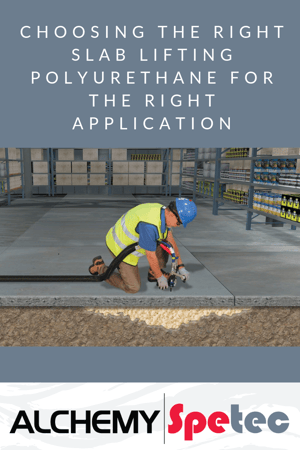 In our continuous effort to make sure you have the technical knowledge to succeed, we’ll explain how to select the appropriate slab lifting polyurethane.
In our continuous effort to make sure you have the technical knowledge to succeed, we’ll explain how to select the appropriate slab lifting polyurethane.
Use the Right Supplier
First and foremost, you want to be sure you’re working with the right supplier. For niche work like polyurethane slab lifting, you need a company that specializes in polymer concrete repair materials. Some larger polyurethane manufacturers make everything under the sun in addition to lifting foam, such as mattress foam, carpet padding foam, etc. Your materials would be manufactured quarterly at most. Technical support, if it exists, is unfocused and lacking in detailed expertise. Don’t set yourself up for failure by going this route.
The right supplier will be a specialized polymer manufacturer with a laser-like focus on producing the best slab lifting foam possible. Even better, they should offer dedicated tech support from professionals with field experience on actual slab lifting jobs. Set yourself up for success with the absolute best supplier partner you can find.
If a Specification Exists, Read it!
If you’re working on a larger job involving an engineering firm, make sure you read the specs! (If the Department of Transportation is involved, they will also have one available.) For experienced contractors, this is just basic common sense obviously.
Foam for Filling Voids
An empty void underneath a slab needs to be filled with a lighter density foam that has an excellent expansion rate yet still ahs the structural strength for the application.
Different Foams for Different Lifting Jobs
The foam you choose for lifting will depend greatly on the size of the slab and the amount of weight it typically bears.
- Residential Jobs
Driveways, walkways, garage floors and the like can usually be lifted with 3 lb density foam such as AP Lift 430.
- Common Commercial/Industrial Jobs
Warehouse floors, concrete retail floors, larger concrete parking slabs and the like will require 4 lb density foam such as AP Lift 440.
- Maximum Weight Bearing Slabs
Airport runways, railroad slabs, transformer pads, factory floors with heavy equipment, grain silo slabs and the like will require 4.75 density foam such as AP Lift 475.
Foam Designed for Wet Environments is Essential
At LEAST 90% of the time, water is the underlying cause of slab problems. On most jobs, the soil will contain at least some infiltration. So ALWAYS make sure your foam is designed for environments with moisture in the soil. Many companies offer resins that will NOT work in wet environments or will require a lot more material to get the job done. Why pay good money for a product that won’t work 90% of the time? Every Alchemy-Spetec lifting foam is designed to work in wet environments.
NSF Approval is a Must
NSF approval is ESSENTIAL for doing work near waterfronts, food processing operations, water treatment plants, etc.
This single designation ensures compliance with the Safe Water Drinking Act (SDWA) and guarantees peace of mind for in-the-field stakeholders on construction projects of almost any scope and size.
The SDWA gives the EPA latitude to impose criminal and civil penalties on industries not in compliance. In 2014 enforcement efforts policing clean water netted $163 million in penalties and fines, 155 combined years of incarceration for sentenced defendants, and $16 million in court-ordered project clean-ups.
Contractors and engineers must be able to confidently choose vendors whose products and services won’t become the source or cause of drinking water contamination.
Alchemy-Spetec is one of only TWO companies in the world with NSF approved lifting foam.
We’ve Got Your Back
If you’re still not sure what the right choice is for an upcoming job, then not to worry – we’re here for you! Our staff has the expertise both in the lab and in the field. We can help you make the right decision. Just give us a call!
Want in-depth info on slab lifting polyurethane and procedures?

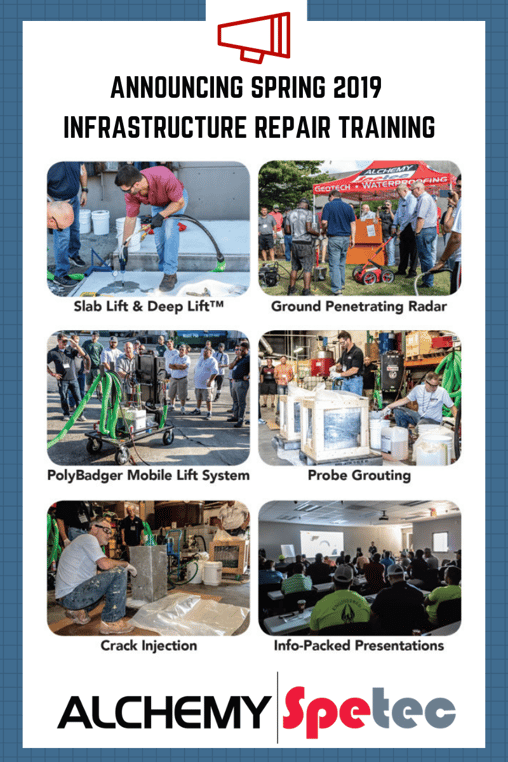 Thursday - Leak Seal
Thursday - Leak Seal



 Voids beneath concrete slabs can be filled with two component polymer foam designed to work in wet or dry conditions.
Voids beneath concrete slabs can be filled with two component polymer foam designed to work in wet or dry conditions. 

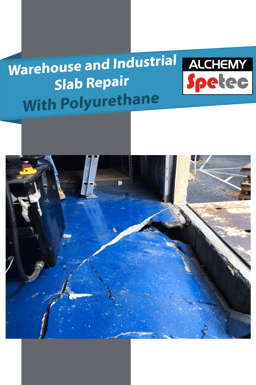 One of the hidden dangers a warehouse or industrial property owner and their employees can face is an unstable or sunken slab with a large void underneath. The last thing anyone wants is injury and/or a lawsuit resulting from an un-repaired trip hazard or worse - a complete slab collapse. Take a good long look at the photo in today's blog graphic. This occurred when a forklift carrying a heavy piece of equipment crossed a slab with an un-detected void underneath. Luckily, no one was injured.
One of the hidden dangers a warehouse or industrial property owner and their employees can face is an unstable or sunken slab with a large void underneath. The last thing anyone wants is injury and/or a lawsuit resulting from an un-repaired trip hazard or worse - a complete slab collapse. Take a good long look at the photo in today's blog graphic. This occurred when a forklift carrying a heavy piece of equipment crossed a slab with an un-detected void underneath. Luckily, no one was injured.

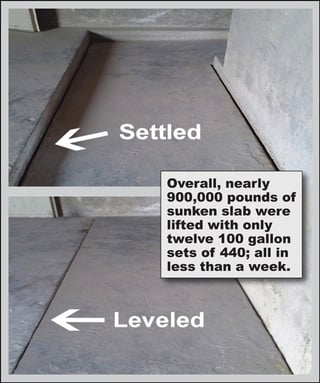 Powerful Polymer
Powerful Polymer
 Powerful Polymer
Powerful Polymer
 In our continuous effort to make sure you have the technical knowledge to succeed, we’ll explain how to select the appropriate
In our continuous effort to make sure you have the technical knowledge to succeed, we’ll explain how to select the appropriate 
 There will be a LOT to see and do at our booth this year:
There will be a LOT to see and do at our booth this year: 

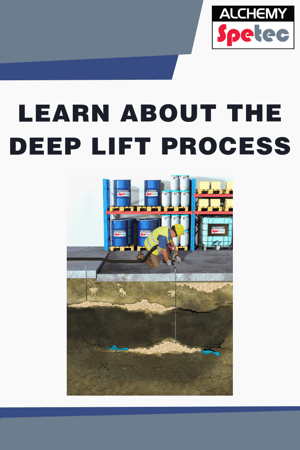


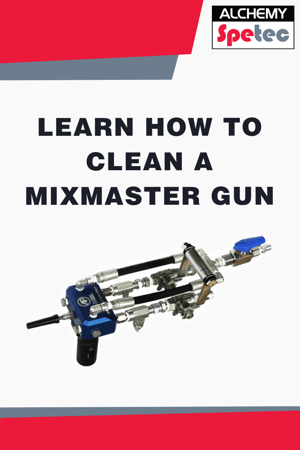 MixMaster Pro – The Production Beast!
MixMaster Pro – The Production Beast!

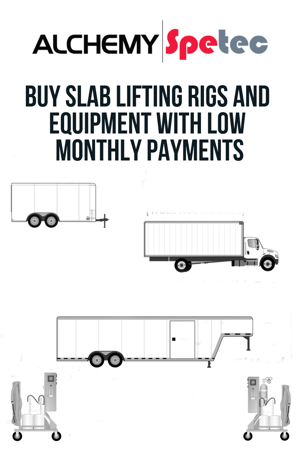 Did you know you can finance a
Did you know you can finance a 
